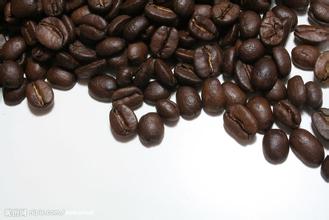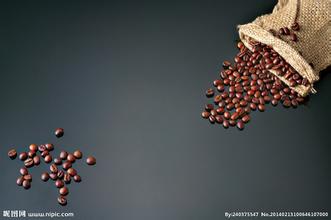How to distinguish the defective beans from coffee beans
The coffee bean itself is a small, light green bean that turns black by roasting what should be a light turquoise bean. Immature beans are over-fermented in the process of refining, resulting in microbial infection, mixed taste, sour smell, mildew smell, drug flavor (phenolic flavor).
Henoic), etc., may contain biotoxins.
Sour beans / local sour beans:
Raw beans have a yellow, yellowish-brown or reddish-brown appearance, usually accompanied by blackened germs, resulting in microbial invasion and infection during harvest or post-processing.
Polluting fermentation, as long as there is one grain, there is an irritating sour taste and disgusting taste. Molds destroy beans: raw beans show yellow, yellowish brown or reddish brown spots, sometimes there is powder on the spots, poor storage is the main cause, such as sporadic spores will infect them
His beans. The taste is mixed, fermented, musty, earthy, phenolic, etc. May contain biotoxins.
Moth-eaten beans:
Raw beans have worm-eaten holes, and more than 3 holes are listed as seriously worm-eaten. Mainly by Hypothenemus hampei (coffee borer)
Invasion of rotten odor, turbid taste, mildew taste, irritating sour taste, etc., affect the appearance of ripe beans may contain biotoxins.
Immature beans:
Wrapped in yellow-green pale silver skin and not easy to peel off, raw beans bend inside. Because of immaturity, the ingredients in beans are insufficient and most of them are astringent, such as rice.
Stick flavor or grass green taste, will seriously damage the taste. Affect the appearance of cooked beans withered beans:
The appearance of raw beans is wrinkled like shrinkage. It is caused by malnutrition, so it does not produce the taste of good coffee, and the taste of hay affects the appearance of ripe beans.
Floating beans. Show a pale appearance, put in the water will float. Caused by excessive dryness during processing. Sometimes the taste of fermentation, mildew, soil and other taste or peculiar smell is not strong, but it will affect the taste of coffee.
Shell beans: improper shelling treatment, coffee beans outside the sheep skin (parchment) is not removed, usually can be sifted out. Shell beans:
Shaped like a shell, caused by genetic variation. The shape is thin, and it is easy to carbonize and produce scorched smell when baking. Too much carbonized ingredients will be healthy.
Kang has a bad effect.
Broken strong beans:
Damage to the refining process, such as shelling, washing, etc., sometimes the damaged edges will turn black. It has the taste of fermentation, mildew, soil and so on, and it is also easy to carbonize and produce scorched taste when baking. Affect the appearance of cooked beans, too much carbonized ingredients will be healthy
Kang has a bad effect. Other foreign bodies are non-coffee impurities, including branches, stones, copper plates, etc. Produce all kinds of odors. Unfortunately, based on cost considerations, not all coffee makers will seriously screen defective beans, but only make use of processing skills
And the means of selling make them disappear from the world, just imagine that even in the coffee shop, the shop used to show you the coffee beans to be boiled for you to drink.
Would you like to cook again? In fact, we should all make such a requirement in order to make sure that CZP.
And if you make your own coffee at home, be sure to pick out the possible defective beans before you enjoy them.

Important Notice :
前街咖啡 FrontStreet Coffee has moved to new addredd:
FrontStreet Coffee Address: 315,Donghua East Road,GuangZhou
Tel:020 38364473
- Prev

What are the varieties of coffee beans?
Water washing-increase fruit acid spirit: water washing is the most popular treatment method at present, and water washing is used in almost all Central and South America except Brazil. The color of the washed beans is blue and green, the appearance of the beans is neat and the pulse is good, and the coffee quality is the highest. Generally speaking, the sour flavor and bright feeling of washed beans are better, and the flavor is clean and free of miscellaneous flavor, which is the most commonly used method for the treatment of fine coffee.
- Next

The practice of coffee flower pulling. Tips on coffee flower drawing.
It takes a little time to learn the technology of making coffee flowers, which is almost like painting a shape directly into the forming method refers to the use of foamed milk, which is quickly poured directly into the espresso before the milk is separated from the foam. After the milk foam and espresso are fused to a certain saturated state, use the hand
Related
- Does Rose Summer choose Blue, Green or Red? Detailed explanation of Rose Summer Coffee plots and Classification in Panamanian Jade Manor
- What is the difference between the origin, producing area, processing plant, cooperative and manor of coffee beans?
- How fine does the espresso powder fit? how to grind the espresso?
- Sca coffee roasting degree color card coffee roasting degree 8 roasting color values what do you mean?
- The practice of lattes: how to make lattes at home
- Introduction to Indonesian Fine Coffee beans-- Java Coffee producing area of Indonesian Arabica Coffee
- How much will the flavor of light and medium roasted rose summer be expressed? What baking level is rose summer suitable for?
- Introduction to the characteristics of washing, sun-drying or wet-planing coffee commonly used in Mantenin, Indonesia
- Price characteristics of Arabica Coffee Bean Starbucks introduction to Manning Coffee Bean Taste producing area Variety Manor
- What is the authentic Yega flavor? What are the flavor characteristics of the really excellent Yejasuffi coffee beans?

